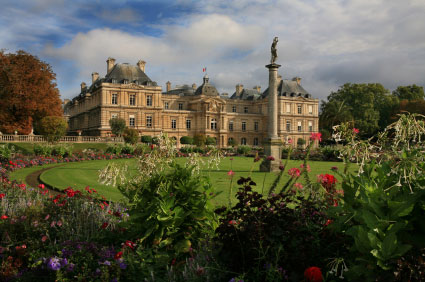"Building well has three conditions: firmness, commodity, and delight." Vitruvius  |
| Palais et Jardin du Luxembourg |
 |
| Palais du Luxembourg |
The Luxembourg Palace in Paris was commissioned in 1615 by Marie de Médicis. Designed after her childhood home Pitti Palaco in Florence, Italy, the Luxembourg Palace remains true to classical 17th century French architecture. The architect, Salomon de Brosse, in addition to Alphonse de Gisors and Jacques Le Mercier followed a typical layout used in designing palaces and manors. Typically seen in French palaces, the wings of the building would be surrounding a main court, with the chief living quarters and chapel facing a garden.
Salomon de Brosse designed the Palais du Luxembourg in the French Baroque style, characterized through a new rhetorical and theatrical fashion. This architecture style first began to surface at the start of the 17th century. During the reigns of Louis XIII, Louis XIV and Louis XV this style continued to flourish and expand. Although Marie Medici This style is expressed primarily through de Brosse's use of lavish embellishments, extravagant ornamentation and bold contrasts. The Palais du Luxembourg embodies stylistic elements of Baroque architectural style through its explorations of form, light and shadow. In addition to these aspects, an external façade often characterized by a dramatic central projection can also be seen very prominently in the Palais.
Sources:

